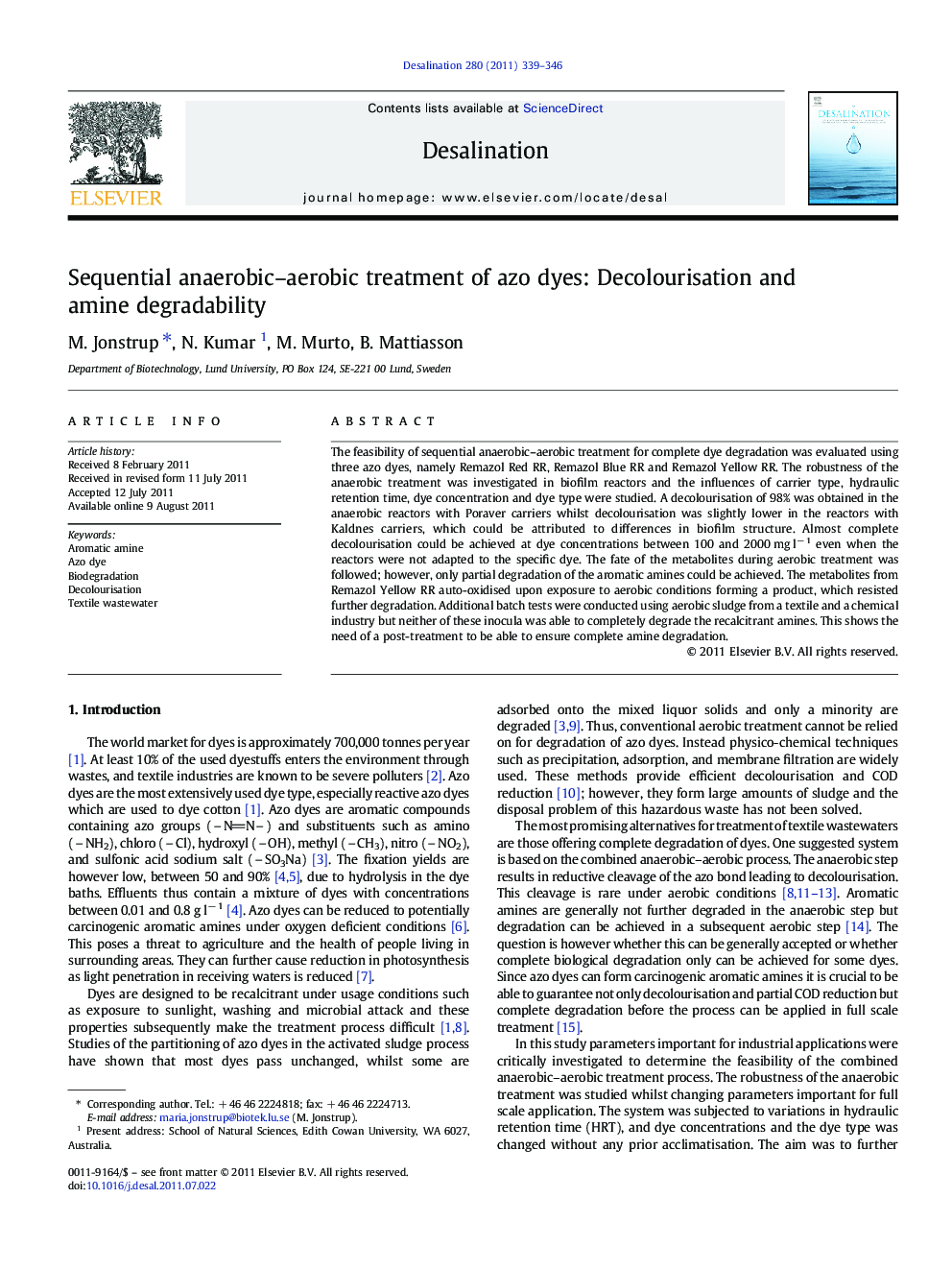| Article ID | Journal | Published Year | Pages | File Type |
|---|---|---|---|---|
| 624636 | Desalination | 2011 | 8 Pages |
The feasibility of sequential anaerobic–aerobic treatment for complete dye degradation was evaluated using three azo dyes, namely Remazol Red RR, Remazol Blue RR and Remazol Yellow RR. The robustness of the anaerobic treatment was investigated in biofilm reactors and the influences of carrier type, hydraulic retention time, dye concentration and dye type were studied. A decolourisation of 98% was obtained in the anaerobic reactors with Poraver carriers whilst decolourisation was slightly lower in the reactors with Kaldnes carriers, which could be attributed to differences in biofilm structure. Almost complete decolourisation could be achieved at dye concentrations between 100 and 2000 mg l− 1 even when the reactors were not adapted to the specific dye. The fate of the metabolites during aerobic treatment was followed; however, only partial degradation of the aromatic amines could be achieved. The metabolites from Remazol Yellow RR auto-oxidised upon exposure to aerobic conditions forming a product, which resisted further degradation. Additional batch tests were conducted using aerobic sludge from a textile and a chemical industry but neither of these inocula was able to completely degrade the recalcitrant amines. This shows the need of a post-treatment to be able to ensure complete amine degradation.
► Anaerobic–aerobic treatment of azo dyes with high decolourisation and COD removal. ► Investigation of parameters important for industrial applications. ► Screening of inocula for aerobic amine degradation. ► Critical investigation and discussion regarding the fate of the aromatic amines.
